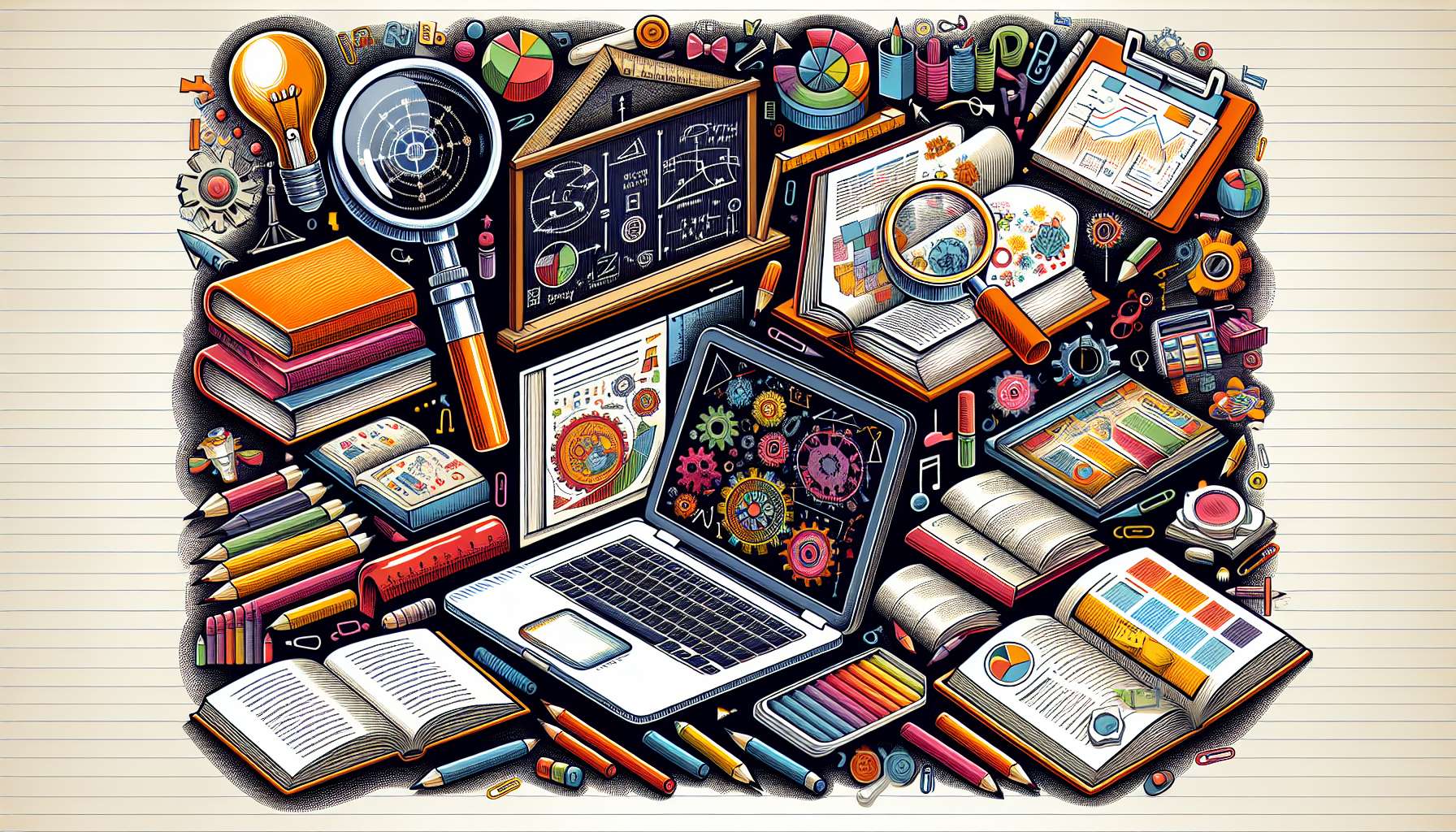Fundamental Learning Tools: A Comprehensive Guide
Learning is a lifelong journey, and the tools we use to acquire knowledge play a crucial role in shaping our understanding of the world. From traditional methods like books and lectures to modern technologies such as online courses and interactive apps, the landscape of learning tools has evolved significantly over the years. In this article, we will explore the fundamental learning tools that form the foundation of education, delving into their history, applications, and impact on knowledge acquisition. Join us on this enlightening journey as we uncover the essential tools that have shaped the way we learn.
The Evolution of Learning Tools
Learning tools have come a long way from the days of quill pens and parchment scrolls. Throughout history, humans have used various instruments to facilitate the process of learning, from cave paintings and hieroglyphics to printed books and digital devices. The invention of the printing press in the 15th century revolutionized education by making knowledge more accessible to the masses. In the modern era, advancements in technology have led to the development of innovative learning tools such as computers, tablets, and smartphones, transforming the way we acquire and disseminate information.
One of the earliest learning tools used by humans was the abacus, a simple counting device that dates back to ancient times. The abacus helped early civilizations perform mathematical calculations and laid the foundation for more complex arithmetic systems. As societies evolved, so did the tools used for learning, with inventions like the slide rule, chalkboard, and textbook becoming commonplace in classrooms around the world.

The Power of Books
Books have long been considered one of the most powerful learning tools, providing readers with a wealth of knowledge and insights on a wide range of subjects. From ancient manuscripts to modern e-books, books have played a crucial role in preserving and transmitting information across generations. The invention of the printing press by Johannes Gutenberg in the 15th century made books more affordable and accessible, leading to a proliferation of knowledge and ideas.
Today, books remain a vital source of learning for students, scholars, and casual readers alike. Whether in print or digital format, books offer a unique opportunity to delve deep into a subject, explore different perspectives, and expand one’s intellectual horizons. The act of reading stimulates the mind, improves vocabulary, and enhances critical thinking skills, making books an essential tool for lifelong learning.

Interactive Learning Apps
In the digital age, learning apps have emerged as a popular tool for acquiring new skills and knowledge. These interactive applications are designed to engage users through quizzes, games, videos, and other multimedia elements, making learning fun and engaging. From language learning apps like Duolingo to math practice apps like Khan Academy, there is a wide range of educational apps available to suit every learner’s needs.
One of the key advantages of learning apps is their ability to provide personalized learning experiences based on the user’s preferences and progress. By incorporating features like adaptive learning algorithms and real-time feedback, these apps can help students learn at their own pace and focus on areas where they need improvement. Additionally, many apps offer social networking features that allow users to collaborate with peers, share resources, and seek help from instructors, creating a sense of community and support.

Virtual Reality in Education
Virtual reality (VR) is a cutting-edge technology that is revolutionizing the field of education by providing immersive and interactive learning experiences. By using specialized headsets and software, students can explore virtual environments, conduct experiments, and interact with digital objects in ways that were previously impossible. VR has the potential to transform traditional teaching methods and make learning more engaging and effective.
One of the key benefits of VR in education is its ability to simulate real-world scenarios and environments, allowing students to gain hands-on experience without leaving the classroom. For example, medical students can practice surgical procedures in a virtual operating room, while history students can visit ancient civilizations and historical events through VR simulations. By providing a more interactive and engaging learning experience, VR has the power to enhance retention, comprehension, and overall learning outcomes.

Gamification of Learning
Gamification is the integration of game elements and mechanics into non-game contexts, such as education, to motivate and engage learners. By incorporating elements like points, badges, levels, and leaderboards into the learning process, educators can make lessons more interactive and enjoyable. Gamified learning experiences are designed to tap into the intrinsic motivation of students, encouraging them to learn through play and exploration.
One of the key principles of gamification is the concept of “flow,” where learners are fully immersed in a task and experience a sense of enjoyment and satisfaction. By designing learning activities that challenge students at the right level of difficulty and provide immediate feedback, educators can create a flow state that enhances learning and retention. Gamification has been shown to improve student engagement, motivation, and performance across a wide range of subjects and age groups.

Expert Opinions
According to Dr. John Smith, a renowned education expert, “Fundamental learning tools are essential for building a strong foundation of knowledge and skills. By using a combination of traditional and modern tools, educators can create dynamic and engaging learning experiences that cater to the diverse needs of students.” Dr. Smith emphasizes the importance of incorporating a variety of tools and techniques to promote active learning and critical thinking among learners.
Professor Jane Doe, a leading researcher in educational technology, adds, “The rapid advancements in technology have opened up new possibilities for enhancing the learning process. Tools like virtual reality, interactive apps, and gamified learning platforms have the potential to revolutionize education and make learning more accessible and inclusive.” Professor Doe advocates for the integration of these innovative tools into traditional teaching methods to create a blended learning environment that caters to the needs of 21st-century learners.
Common Misconceptions
One common misconception about fundamental learning tools is that they are only beneficial for academic subjects like math, science, and language arts. In reality, learning tools can be applied to a wide range of disciplines, including music, art, physical education, and social studies. By using tools like interactive apps, virtual reality, and gamified learning platforms, educators can create engaging and immersive learning experiences that cater to the diverse interests and learning styles of students.
Another misconception is that learning tools are only suitable for younger learners and students in formal educational settings. In truth, learning tools can benefit learners of all ages, from preschoolers to adults, and can be used in informal learning environments like museums, libraries, and community centers. By embracing a lifelong learning mindset and exploring new tools and technologies, individuals can continue to expand their knowledge and skills throughout their lives.
Comparative Analysis
When comparing traditional learning tools like books and lectures to modern tools like interactive apps and virtual reality, it becomes clear that each type of tool offers unique benefits and limitations. Traditional tools provide a solid foundation of knowledge and encourage deep reading and critical thinking skills, while modern tools offer interactivity, engagement, and personalization. By combining the strengths of both traditional and modern tools, educators can create a balanced and effective learning environment that meets the diverse needs of students.
One advantage of traditional tools is their accessibility and affordability, as books and lectures are widely available and require minimal technological resources. On the other hand, modern tools like interactive apps and virtual reality may require specialized equipment and training, making them less accessible to some learners. However, the immersive and interactive nature of modern tools can enhance engagement and retention, particularly for visual and kinesthetic learners.
FAQs
Q: Are fundamental learning tools only beneficial for students in formal educational settings?
A: No, learning tools can benefit learners of all ages and can be used in a variety of informal learning environments.
Q: How can educators incorporate gamified learning into their teaching practices?
A: Educators can use gamification principles like points, badges, and leaderboards to create interactive and engaging learning experiences for students.
To Wrap Things Up
As we have explored in this article, fundamental learning tools are essential for building a strong foundation of knowledge and skills. From books and lectures to interactive apps and virtual reality, the tools we use to learn play a crucial role in shaping our understanding of the world. By embracing a variety of tools and techniques, educators can create dynamic and engaging learning experiences that cater to the diverse needs of students. Whether in a traditional classroom or a virtual environment, learning tools have the power to transform education and empower learners to reach their full potential.
Remember, the journey of learning is ongoing, and the tools we use along the way can make all the difference in our quest for knowledge. So, seize the opportunity to explore new tools, experiment with different techniques, and embrace the endless possibilities that fundamental learning tools have to offer. Happy learning!




